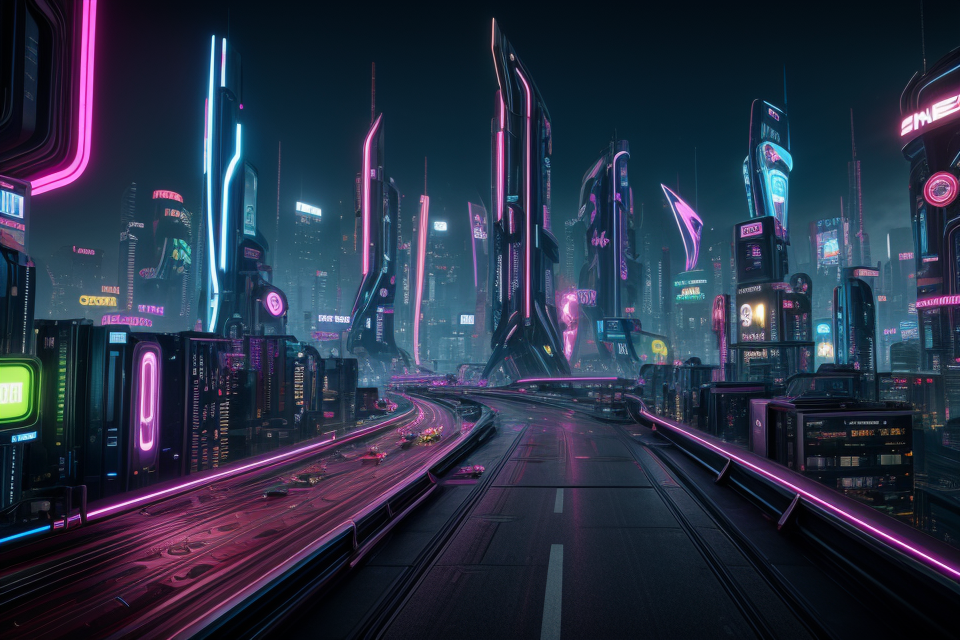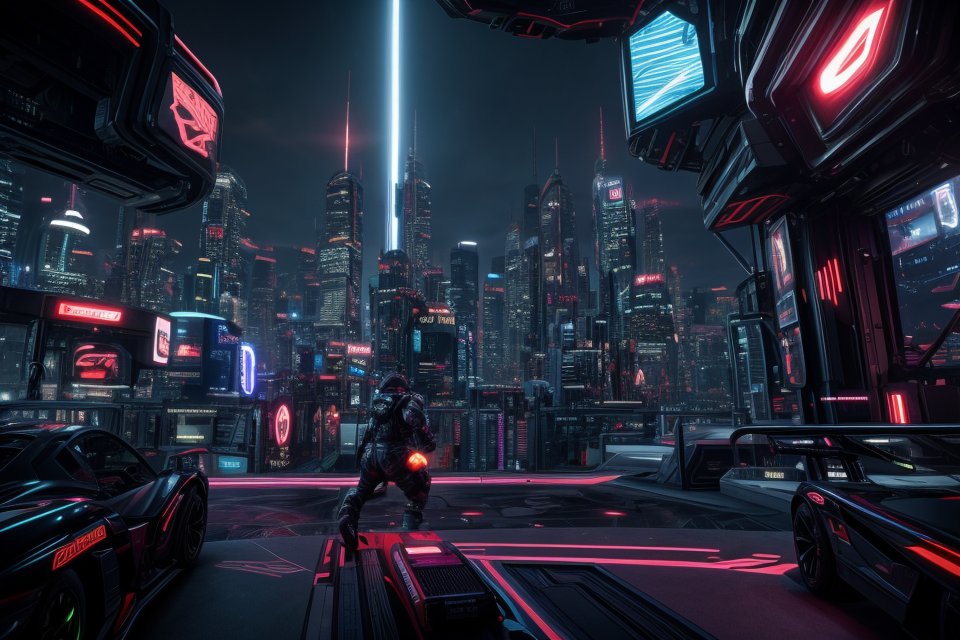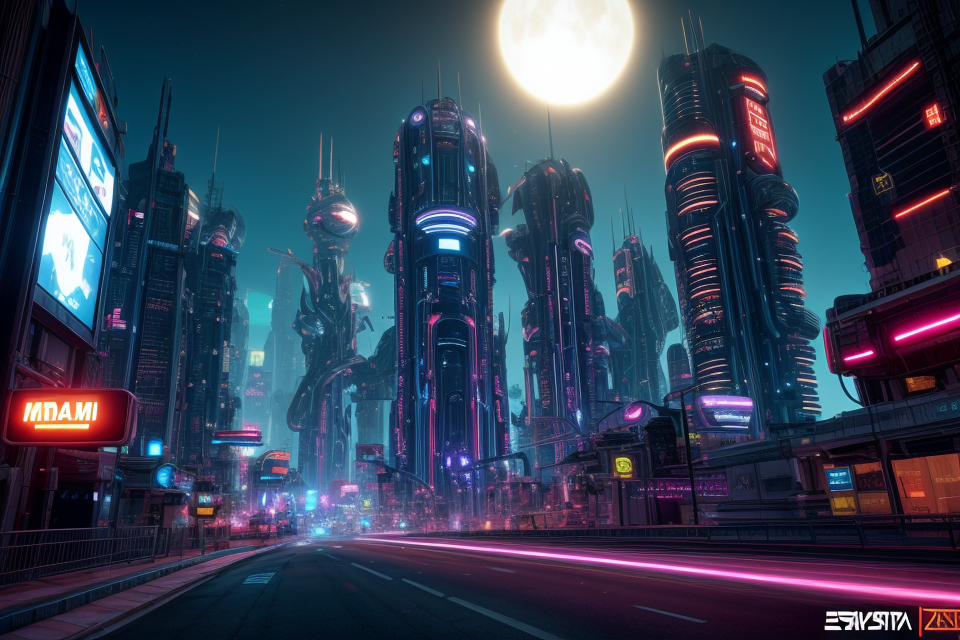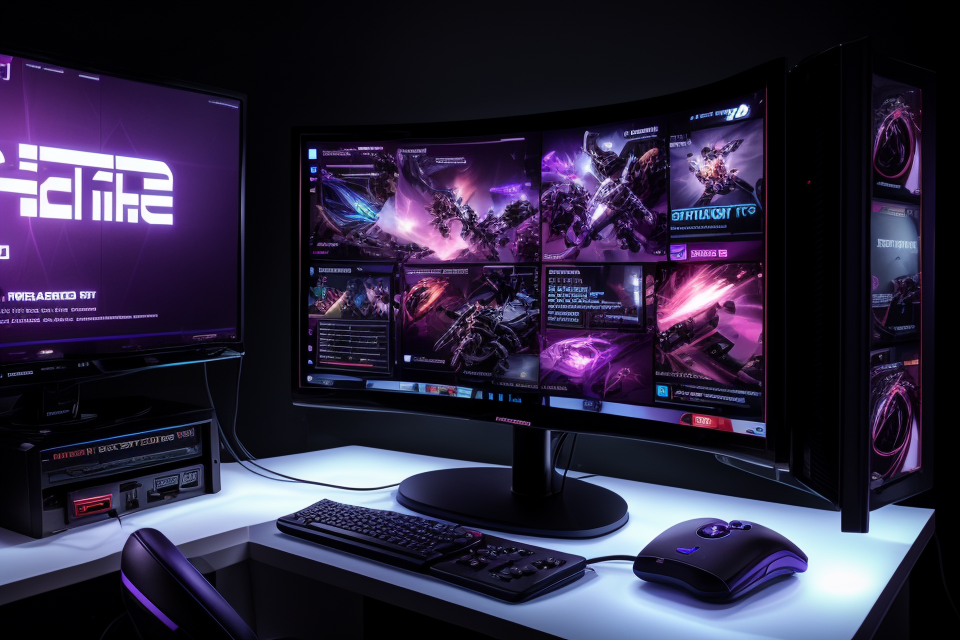
Gaming has come a long way since the days of simple pixelated graphics. Today, the world of gaming is a visual spectacle, with graphics that are so realistic that they can transport players to another world. But does graphics really matter for gaming? In this comprehensive analysis, we will explore the significance of graphics in modern gaming and how it affects the overall gaming experience. We will delve into the history of gaming graphics, the role of graphics in immersion and realism, and the impact of graphics on game design and development. So, get ready to discover why graphics are a crucial element in modern gaming.
The Evolution of Graphics in Gaming
The Early Years: Pixel Art and Sprites
Pixel Art: A Nostalgic Beginning
In the early days of gaming, graphics were simple and limited. Pixel art was the primary form of graphical representation in games, with each image composed of tiny pixels that created a visual image. Pixel art was a significant improvement over the early text-based games, as it allowed for the creation of images that players could interact with. The pixel art style was often used in early arcade games and console games, and it quickly became a beloved and iconic aspect of gaming culture.
Sprites: Bringing Characters to Life
Sprites are small, two-dimensional images that are used to represent characters and objects in games. Sprites were introduced in the late 1970s and early 1980s, and they revolutionized the way that games were designed. With sprites, characters and objects could be given a sense of movement and personality, making the game world feel more immersive and dynamic. The use of sprites allowed for more complex gameplay and storytelling, and it paved the way for the development of more advanced graphics technologies.
Overall, the early years of gaming were defined by the use of pixel art and sprites, which allowed for the creation of engaging and immersive game worlds. These simple yet effective graphics technologies helped to establish the foundation for the modern gaming industry, and they continue to be celebrated by gamers and developers alike.
The Transition to 3D Graphics
The Rise of 3D Games: A New Era for Gaming
The transition to 3D graphics in gaming marked a significant turning point in the industry. This new era of gaming offered players a more immersive and realistic gaming experience. The introduction of 3D games provided developers with new creative opportunities, allowing them to design more complex environments and characters. As a result, 3D games became increasingly popular among gamers, and the gaming industry saw a significant shift towards this new technology.
Advantages and Limitations of 3D Graphics
While 3D graphics offered numerous advantages, there were also some limitations to this new technology. One of the main advantages of 3D graphics was the ability to create a more realistic and immersive gaming experience. Players could now move through fully realized environments, interact with characters, and experience the game world in a way that was previously impossible. Additionally, 3D graphics allowed for greater visual detail, making characters and environments more lifelike and appealing.
However, there were also some limitations to 3D graphics. One of the main challenges was the increased hardware requirements needed to run 3D games. This meant that many players, particularly those with older or less powerful computers, were unable to enjoy the full benefits of 3D graphics. Additionally, the complexity of 3D graphics also meant that game development became more time-consuming and expensive. As a result, many smaller developers were unable to compete with larger studios that had the resources to invest in 3D graphics technology.
The Impact of Graphics on Gameplay
Visuals and Immersion
In the world of gaming, visuals play a crucial role in immersing players into the game world. High-quality graphics not only enhance the overall aesthetic of the game but also contribute significantly to the player’s emotional connection with the game. The following are some of the ways in which visuals impact immersion in modern gaming.
Atmosphere and Environmental Storytelling
One of the most significant impacts of graphics on immersion is the ability to create an atmosphere and convey environmental storytelling. This involves the use of visual elements such as lighting, color, and texture to set the tone and mood of the game world. For instance, a dark and eerie environment can create a sense of tension and fear, while a bright and colorful environment can evoke feelings of joy and excitement.
Environmental storytelling is also a vital aspect of modern gaming. This refers to the use of the game world to convey a story or message to the player. Through the use of visual cues such as object placement, character behavior, and environmental details, developers can convey a narrative that complements the game’s storyline.
Character Modeling and Animation
Character modeling and animation are also critical components of immersion in modern gaming. High-quality character models and animations can create a sense of realism and believability, making the player feel as though they are interacting with real characters.
Realistic character animations can also convey emotions and actions that would otherwise be difficult to portray through dialogue or cutscenes. For example, a character’s facial expressions and body language can communicate a range of emotions, from joy and excitement to fear and anger.
Moreover, character modeling and animation can also impact the player’s emotional connection with the game world. When characters are well-designed and believable, players are more likely to become emotionally invested in their journey and feel a sense of empathy or attachment to the characters they encounter.
In conclusion, visuals play a significant role in immersion in modern gaming. From atmosphere and environmental storytelling to character modeling and animation, high-quality graphics contribute significantly to the player’s emotional connection with the game world. As technology continues to advance, it is likely that the role of graphics in immersion will only continue to grow, further enhancing the overall gaming experience.
Graphics and Game Mechanics
Graphics play a crucial role in the overall gameplay experience of modern video games. The mechanics of a game are greatly influenced by the graphics used, as they determine the way the game world is presented to the player.
Smooth Gameplay and Frame Rates
One of the most important aspects of graphics in gaming is their impact on frame rates. Frame rates refer to the number of images displayed per second, and a higher frame rate generally results in smoother gameplay. This is because a higher frame rate allows for more accurate representation of movement and animation, resulting in a more responsive and immersive experience for the player. In addition, high frame rates also help to reduce lag and minimize input lag, which can greatly affect the player‘s ability to control their character and interact with the game world.
Camera Angles and Perspectives
Another important aspect of graphics in gaming is their impact on camera angles and perspectives. The camera angle refers to the position from which the player views the game world, and this can greatly affect the player‘s perception of the game. Different camera angles can provide different levels of immersion and control, and can also affect the player’s ability to see and navigate the game world. For example, a first-person perspective can provide a more immersive experience, as the player is able to see the game world through the eyes of their character. On the other hand, a third-person perspective can provide a more objective view of the game world, allowing the player to see their character and the environment around them.
Overall, graphics play a crucial role in the mechanics of modern video games. They can greatly affect the player‘s experience of the game, including their ability to control their character, interact with the game world, and enjoy the overall gameplay experience. As technology continues to advance, it is likely that the role of graphics in gaming will continue to evolve and become even more integral to the overall experience of playing video games.
Graphics vs. Gameplay: The Great Debate
The Priority of Gameplay Over Graphics
Balancing Visuals and Mechanics
When discussing the importance of graphics in modern gaming, it is essential to consider the delicate balance between visuals and gameplay. A game’s mechanics, such as its controls, level design, and overall flow, are often considered more critical to its success than its graphics. Players want to be able to jump into a game and enjoy its core gameplay mechanics without being distracted by subpar visuals.
The Case for Focusing on Gameplay
The primary focus of any game should be its gameplay. Graphics can enhance the overall experience, but they should never be prioritized over gameplay. Players want to be challenged, entertained, and immersed in a game’s world, and this can only be achieved through solid mechanics and level design. Graphics may make a game look more visually appealing, but they do not make up for poor gameplay.
Additionally, some players may prefer a more minimalist aesthetic, which prioritizes gameplay over graphics. These players may find that a game with simple graphics but excellent mechanics is more enjoyable than a game with cutting-edge visuals but lackluster gameplay.
Ultimately, while graphics can enhance a game’s overall experience, they should never be prioritized over gameplay. A game must have solid mechanics and level design to be enjoyable, and graphics should only be used to supplement the experience, not define it.
The Importance of Graphics in Enhancing Gameplay
Graphics play a crucial role in enhancing gameplay in modern gaming. The visual aspects of a game are not just for aesthetics, but they also contribute to the overall experience and immersion of the player. In this section, we will delve into the importance of graphics in enhancing gameplay.
The Role of Graphics in Player Engagement
Graphics are essential in keeping players engaged in a game. High-quality graphics can create a more immersive experience, making the player feel like they are part of the game world. This level of immersion can lead to increased engagement, as players become more invested in the story and characters. Moreover, graphics can help to create a sense of realism, making the game world feel more believable and immersive.
The Impact of Realism and Attention to Detail
Realism is a critical aspect of graphics in modern gaming. The more realistic the graphics, the more immersive the experience. This is because realistic graphics can create a sense of presence, making the player feel like they are in the game world. Additionally, attention to detail in graphics can help to create a more believable game world. For example, realistic lighting, shadows, and textures can create a more immersive experience. Furthermore, realistic animations can make the characters and environment feel more lifelike, contributing to the overall immersion of the player.
In conclusion, graphics play a vital role in enhancing gameplay in modern gaming. They contribute to player engagement by creating a more immersive experience, and attention to detail can make the game world feel more believable. Graphics are not just for aesthetics; they are essential in creating a more immersive and enjoyable gaming experience.
The Future of Graphics in Gaming
Emerging Technologies and Innovations
Ray Tracing and Global Illumination
Ray tracing is a rendering technique that simulates the behavior of light in a scene. It calculates the path of each ray of light as it bounces off surfaces, taking into account the color and reflectivity of those surfaces. This creates realistic lighting and shadows, making scenes more lifelike. Global illumination is a type of ray tracing that considers the interplay of light between all objects in a scene, taking into account how light bounces around the environment. This leads to more accurate lighting and shadows, improving the overall visual quality of a scene.
Virtual Reality and Augmented Reality
Virtual reality (VR) and augmented reality (AR) are technologies that blend digital content with the real world. VR creates a fully immersive digital environment, while AR overlays digital content on the real world. Both technologies have the potential to revolutionize gaming by providing players with more immersive experiences. For example, VR can create a sense of presence, making players feel like they are truly inside the game world. AR can enhance the real world with digital content, adding new layers of interactivity to games. As these technologies continue to evolve, they will likely play an increasingly important role in the future of gaming.
The Potential of Graphics to Shape the Future of Gaming
Enhanced Realism and Immersion
Graphics play a crucial role in enhancing the realism and immersion of modern games. With the advancements in technology, game developers are now able to create highly detailed and realistic environments, characters, and objects. This level of detail not only enhances the overall visual experience but also helps to create a more immersive gaming experience. For example, in first-person shooter games, the realistic graphics allow players to feel as if they are actually in the game, making the experience more intense and exciting.
New Opportunities for Storytelling and World Building
The advancements in graphics technology have also opened up new opportunities for storytelling and world building in games. With more realistic graphics, game developers can create more complex and intricate storylines, allowing players to become fully immersed in the game’s world. Additionally, the use of graphics can help to bring characters and environments to life, making them more relatable and engaging for players. This can lead to a more engaging and memorable gaming experience, as players become more invested in the game’s story and world.
FAQs
1. What is the role of graphics in modern gaming?
The role of graphics in modern gaming is crucial. Graphics play a significant role in creating an immersive gaming experience for players. With advanced graphics, games become more realistic, visually appealing, and engaging. Realistic graphics enhance the overall gaming experience and make it more enjoyable for players. Graphics also play a crucial role in game design, gameplay, and storytelling. Advanced graphics technology helps developers to create complex and intricate game worlds, which adds to the overall gaming experience.
2. Why are graphics important in modern gaming?
Graphics are important in modern gaming because they help to create a more immersive and realistic gaming experience. Advanced graphics technology enables developers to create more detailed and complex game worlds, which enhances the overall gaming experience. Realistic graphics also help to create a more engaging and visually appealing gameplay experience. Graphics are also important in terms of game design and storytelling. Advanced graphics technology allows developers to create more complex and intricate game worlds, which helps to enhance the overall gaming experience.
3. Can a game with poor graphics still be enjoyable?
While graphics are important in modern gaming, a game with poor graphics can still be enjoyable. Gameplay, storytelling, and other factors also play a crucial role in the overall gaming experience. While advanced graphics may enhance the overall gaming experience, they are not the only factor that determines whether a game is enjoyable or not. A game with poor graphics may still have engaging gameplay, an interesting storyline, and other redeeming qualities that make it enjoyable to play.
4. What impact do graphics have on gameplay?
Graphics have a significant impact on gameplay. Advanced graphics technology enables developers to create more detailed and complex game worlds, which enhances the overall gaming experience. Realistic graphics also help to create a more engaging and visually appealing gameplay experience. Graphics can also affect gameplay mechanics and controls. For example, a game with advanced graphics may have more realistic physics, which can affect how the game is played. Graphics can also affect the level of immersion and engagement that players feel while playing a game.
5. How has the importance of graphics evolved in modern gaming?
The importance of graphics has evolved significantly in modern gaming. In the early days of gaming, graphics were simple and basic. However, as technology has advanced, graphics have become more realistic, detailed, and complex. Today, advanced graphics technology is a crucial component of modern gaming. Graphics are no longer just a nice-to-have feature, but are an essential part of creating an immersive and engaging gaming experience. The evolution of graphics technology has enabled developers to create more complex and intricate game worlds, which has enhanced the overall gaming experience.
6. What is the future of graphics in modern gaming?
The future of graphics in modern gaming is bright. As technology continues to advance, graphics are likely to become even more realistic, detailed, and complex. Virtual reality and augmented reality technology may also play a significant role in the future of graphics in gaming. These technologies have the potential to create even more immersive and engaging gaming experiences. Additionally, advances in computer processing power and graphics technology may enable developers to create even more complex and intricate game worlds, which will enhance the overall gaming experience.
7. Can advanced graphics technology enhance the overall gaming experience?
Advanced graphics technology can definitely enhance the overall gaming experience. Realistic graphics can create a more immersive and engaging gaming experience, which can enhance players’ enjoyment of the game. Advanced graphics technology can also enable developers to create more detailed and complex game worlds, which can enhance the overall gaming experience. However, it is important to note that graphics are just one component of the overall gaming experience. Other factors such as gameplay, storytelling, and controls also play a crucial role in determining the overall quality of a game.


